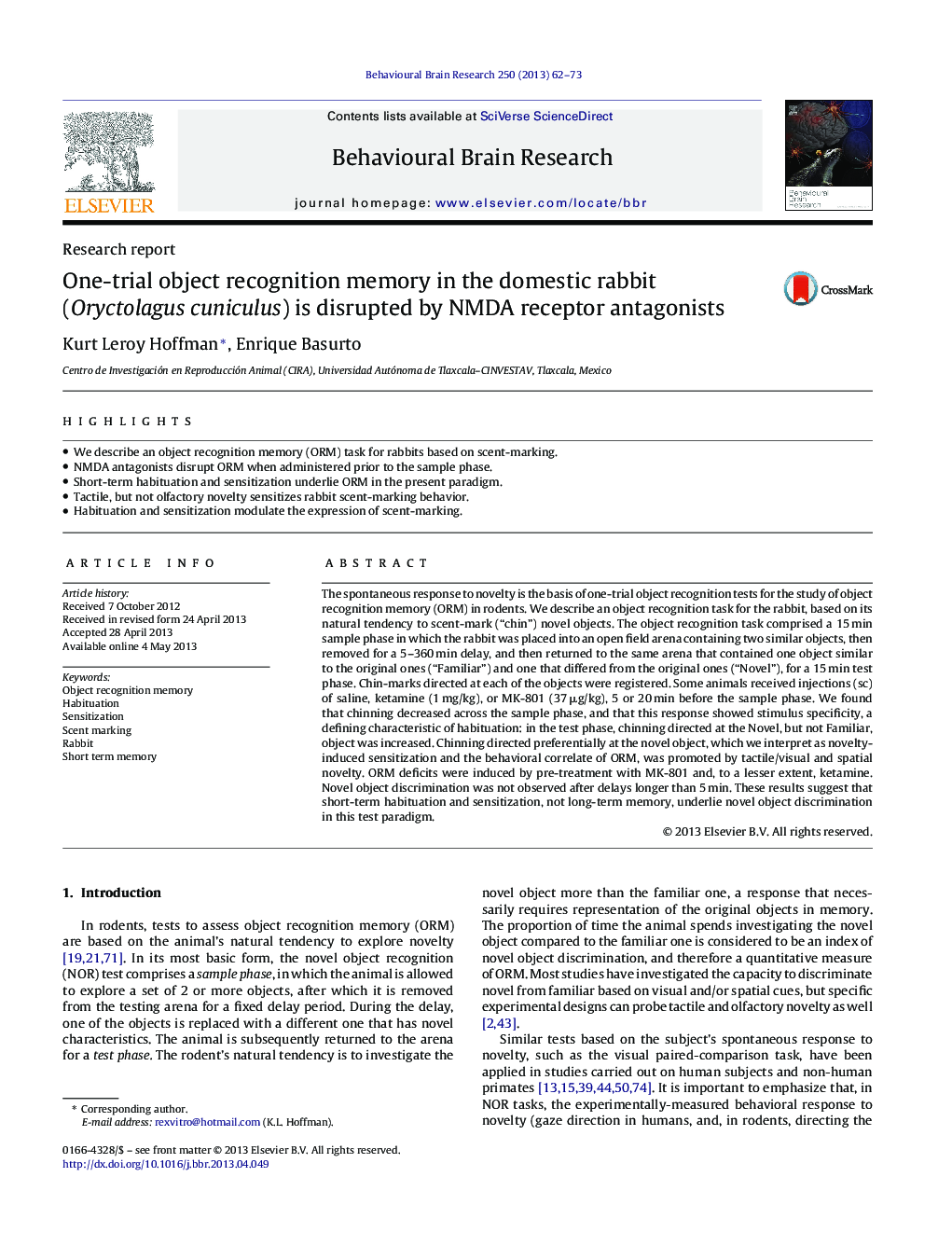| Article ID | Journal | Published Year | Pages | File Type |
|---|---|---|---|---|
| 6258966 | Behavioural Brain Research | 2013 | 12 Pages |
â¢We describe an object recognition memory (ORM) task for rabbits based on scent-marking.â¢NMDA antagonists disrupt ORM when administered prior to the sample phase.â¢Short-term habituation and sensitization underlie ORM in the present paradigm.â¢Tactile, but not olfactory novelty sensitizes rabbit scent-marking behavior.â¢Habituation and sensitization modulate the expression of scent-marking.
The spontaneous response to novelty is the basis of one-trial object recognition tests for the study of object recognition memory (ORM) in rodents. We describe an object recognition task for the rabbit, based on its natural tendency to scent-mark (“chin”) novel objects. The object recognition task comprised a 15 min sample phase in which the rabbit was placed into an open field arena containing two similar objects, then removed for a 5-360 min delay, and then returned to the same arena that contained one object similar to the original ones (“Familiar”) and one that differed from the original ones (“Novel”), for a 15 min test phase. Chin-marks directed at each of the objects were registered. Some animals received injections (sc) of saline, ketamine (1 mg/kg), or MK-801 (37 μg/kg), 5 or 20 min before the sample phase. We found that chinning decreased across the sample phase, and that this response showed stimulus specificity, a defining characteristic of habituation: in the test phase, chinning directed at the Novel, but not Familiar, object was increased. Chinning directed preferentially at the novel object, which we interpret as novelty-induced sensitization and the behavioral correlate of ORM, was promoted by tactile/visual and spatial novelty. ORM deficits were induced by pre-treatment with MK-801 and, to a lesser extent, ketamine. Novel object discrimination was not observed after delays longer than 5 min. These results suggest that short-term habituation and sensitization, not long-term memory, underlie novel object discrimination in this test paradigm.
